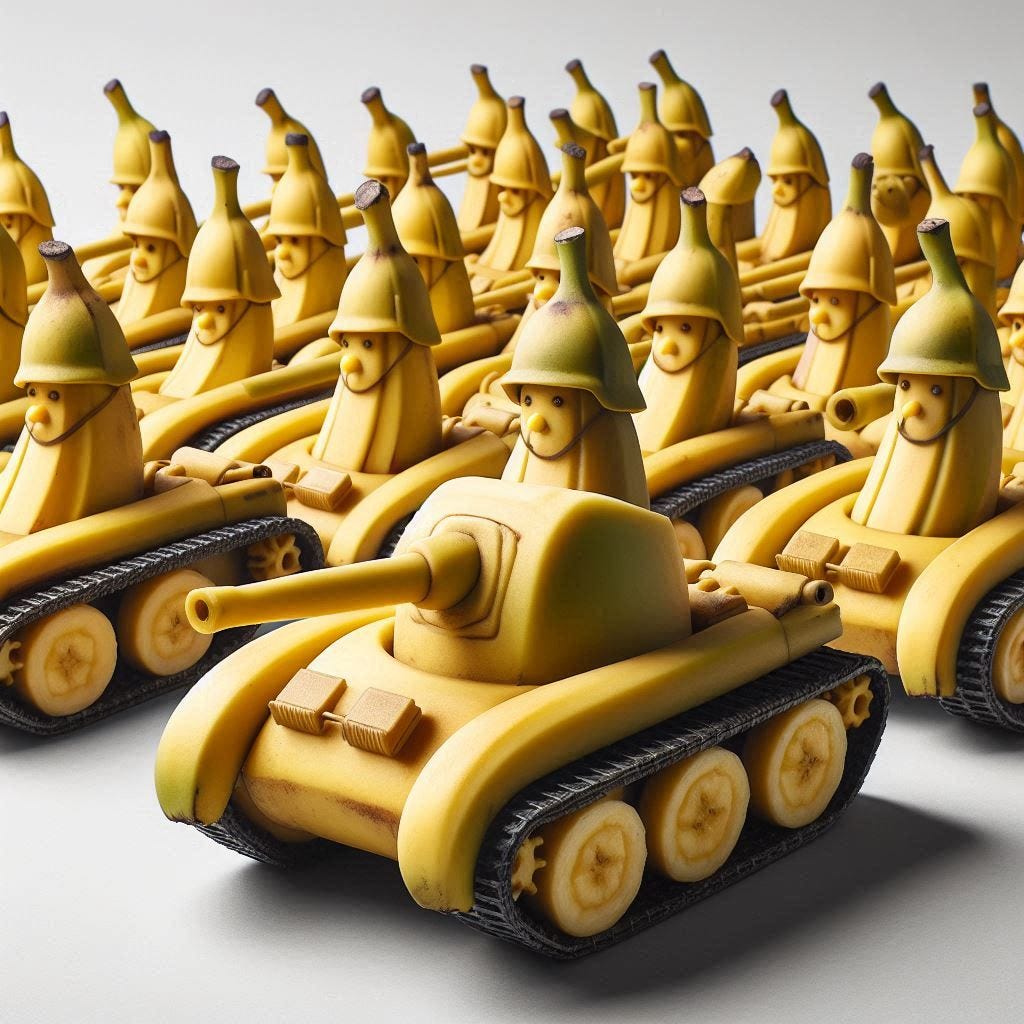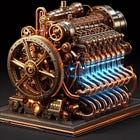Risk & Progress| A hub for essays that explore risk, human progress, and your potential. My mission is to educate, inspire, and invest in concepts that promote a better future. Subscriptions are free, paid subscribers gain access to the full archive, including the Pathways of Progress and Realize essay series.
As the Second Industrial Revolution spread beyond Britain to Germany and the United States, it helped trigger a military arms race. Eventually, this race led to the “Great War,” in which millions died at the hands of mass-produced machines. But not all was lost, for the same international rivalry also gave birth to innovations that would save billions of lives thereafter. German scientists embarked on an ambitious mission to source the nitrogen they needed to make bombs from the air we breathe. Their success would take many lives, but also resulted in a limitless supply of fertilizer needed to grow food, saving far more.
An Energy Revolution
Thus far, we have explored the history of human progress, from prehistory to the Industrial Revolution. I’ve made the case that all progress is a function of energy and knowledge abundance, and these were prerequisites for the Industrial Revolution. Food availability is just one form of energy, but it’s an important one, for it powers the brains of billions of human minds that ceaselessly solve problems as nodes on a “social supercomputer.” However, as the human population grew in the early years of the 19th Century, many feared there would not be enough food for all of us.
Thomas Malthus, an English economist, took note of the rapid population growth, which was faster than at any time in human history. Using forecasting models, he arrived at a dire conclusion: the population was growing geometrically while food output was constrained to grow linearly, limited by the amount of land that could be tilled. Soon, he prophesied, mass famine lay ahead for us, as the number of mouths to feed exceeded the food that could be grown. Malthus, of course, turned out to be wrong because the very same forces of progress that triggered the rising population, urbanization, and technological advancements of the Industrial Revolution also led to increased food output.
Increasing agricultural output was no trivial feat; it was a difficult problem without an obvious solution. The key limitation that farmers faced throughout history was nitrogen in the soil. Plants require nitrogen for growth as the element is a significant component of chlorophyll and amino acids. Soil nitrogen, however, is produced at the whim of nitrogen-fixing microbes that live in the soil or on the roots of some plants. They produce nitrogen too slowly to keep pace with human agricultural demands, and after a few harvests, the soil becomes depleted and exhausted. This limits the amount of food that can be squeezed from a hectare of land. Nitrogen, however, isn’t rare at all. In fact, the Earth’s atmosphere is composed of about 78 percent nitrogen. However, this nitrogen is in the form of N2 gas, an extremely stable nitrogen-nitrogen triple bond, making the gas almost completely inert and unusable for plants.
In the latter half of the 19th Century, chemists found a solution to our nitrogen problem, albeit a temporary one. They noticed that guano, essentially seabird and bat droppings, were extremely rich in the nutrients required for plant growth, including, most crucially, usable nitrogen. Almost overnight, a guano industry emerged, with millions of tons harvested worldwide and shipped back to Europe. Guano was so precious that sources were quickly depleted wherever they were found. In Ichaboe Island, for example, off the coast of Namibia, a mine was established in March 1843 and was fully depleted by May of 1845, leaving the island bare, deserted, and 15 feet shorter than it had been before exploitation. The same boom and bust cycle played out wherever guano was found. It was clear that, like the nitrogen in the soil itself, our demand for food would eventually deplete all available deposits.
An Unlikely Solution
As the 19th Century drew to a close, the Industrial Revolution was spreading rapidly outside Britain. Germany found itself an ascendant world power in a precarious political position. The country had a rapidly growing demand for usable nitrogen in its arms and agriculture industries. The largest deposits of saltpeter and guano, however, key sources of this usable nitrogen, were located in far-flung territories either directly controlled by the British, their chief rival, or under threat by her Royal Navy.
In response, Fritz Haber and Carl Bosch took up a historic challenge; to use the air that surrounds us to free Germany from foreign-controlled supply lines. In what was one of the largest and most ambitious technological “Moonshots” before the Manhattan Project, they painstakingly developed a method to extract usable nitrogen from the atmosphere. They invented a process whereby, under intense pressure and heat, hydrogen and nitrogen gas would combine to produce ammonia when passed over an iron catalyst to accelerate the chemical reaction.
The synthetic ammonia that was produced was superior to guano when used as a raw material for fertilizer. It was also used in the production of nitric acid, a precursor required for the manufacture of chemical explosives. Large-scale commercial production using the Haber process began in 1913, just one year before the outbreak of WWI, and was, understandably, crucial to the German war effort. Unfortunately, the innovation enabled and prolonged a bloody conflict that cost millions of lives. After the war, however, the Treaty of Versailles forced compulsory licensing upon the German chemical industry. As a consequence, the innovative Haber-Bosch process quickly diffused across the globe.
The process remains largely unchanged from that developed over a century ago and ranks among the most important innovations in all of human history. The Haber process produces some ~100 million tons of fertilizer annually, helping feed at least half the world’s population. Quite literally, it has saved billions of lives, or at least, enabled billions more to be born and experience life. Indeed, without the Haber process, there is a good chance that you would not be alive right now. In a world of nuclear energy and emergent AI, the Haber process is a reminder that all innovations can be used for benefit or for harm. We can build bombs or grow bananas; the choice is ours.
You also may like…







We should be careful with the hagiography here. The discovery of a process to produce nitrogen for fertilizer is undoubtedly one of the great achievements of the 20th century, and the link to explosives is a tasty bit of irony. But gunpowder and fertilizer came from dung in the early days, so the relationship is not really novel, only the productive capacity.
An unintended consequence of the nitrogen revolution may end up being barren soil. Nitrogen is only one of the elements needed for healthy organic growth, for food or not. Phosphorus, minerals and metals get depleted and are not replaced. Plants grow with lower and lower nutritive value. Soils become unable to support the worms and microorganisms that create balanced conditions for growth. We end up with an engineered world stripped of complexity so that it is managed and sterile.
There is a narrative where future generations look at the Nitrogen revolution as the beginning of the end, not a new beginning. It is worth at least reflecting on that.
Please please please read "Seeing Like a State: How Certain Schemes to Improve the Human Condition Have Failed" by James C. Scott